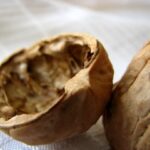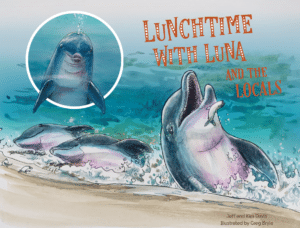 IN A NUTSHELL: Every day at low tide, South Carolina bottlenose dolphins exhibit amazingly effective teamwork to catch their dinner. We can learn from their amazing display. IN A NUTSHELL: Every day at low tide, South Carolina bottlenose dolphins exhibit amazingly effective teamwork to catch their dinner. We can learn from their amazing display. |
I had the pleasure of spending last weekend on Seabrook Island, South Carolina, a very relaxed locale for enjoying the beach and natural surroundings. This is a very tidal region, and the daily marsh to ocean to marsh flow is a key element of the rhythm of life. While I was there, low tide was late afternoon, and it was a great time to chill on a cruiser bike, riding the beach on the hardpacked sand.
My normal routine was to ride from Privateer Creek on the southern tip of Seabrook up to Captain Sam”s Inlet which separates Seabrook from Kiawah Isle to the northeast. Although I grew up on the beach and have been a lifelong “ocean guy”, I witnessed something amazing there that I had never seen before in my life, a pod of bottlenose dolphins “Strand Feeding” in the cut. You, like I, may have seen something similar with killer whales on Discovery Channel or National Geographic, but I had never witnessed this in person, and it totally blew me away.
A pod of 5 dolphins cruised through the tidal creek until they found a school of finger mullet or other suitable bait, and then began to circle the school in ever tighter circles, effectively trapping and compressing the school into a tight and tasty mass. Then they created a powerful bow wave that would rush the prey literally onto the bank of the creek, and 3 to 5 of the dolphins would actually come all the way out of the water onto the bank and devour as many fish as they could into their waiting mouths! They would then wriggle back into the water, cruise around until they found another school of fish, and repeat the process. Lather, rinse, repeat. I went back on two subsequent afternoons on a low-to-incoming tide and they were going after it again. I watched them feed and they would beach themselves about every 10 minutes. A really memorable and amazing show.
Upon returning, I did a little research and learned a few facts about this behavior:
- It is apparently a learned behavior, not instinctual, and young calves pick it up by observing their mother.
- Bottlenose dolphin in Mexico and Portgual have also been observed to strand feed, but only the dolphin in a 100 mile stretch of South Carolina and Georgia strand feed daily.
- No one knows 100% why, but the dolphin ALWAYS land on their right sides when they come up on the bank. (It is true that their heart’s are on the left side like ours, which may have something to do with it.) It actually looks like a synchronized trick from Sea World. Due to the abrasiveness of the mud banks, their teeth on the right sides of their jaws get worn down from the repeated beachings.
- Dolphins have excellent out of water vision and have no problem catching the fish as they flop around on the bank.
We captured a few cell phone photos, and I’ve also included some other shots and a video from around the web to help you visualize this amazing behavior. As a leader I was struck by several factors of their teamwork:
- There was no obvious leader, and they appeared to operate effortlessly as a cohesive unit.
- They moved from one school of fish to the next quickly, and were able to instantly gain consensus about what opportunity to work on.
- I’m sure they communicated somehow, but there was definitely a whole lot of action and not much talk.
- They appeared to rotate through and let every pod member take a turn at grabbing some of the glory.
- Each team member was an impressive thing of beauty of pure muscle and brains and was a master at what they did.
Now a full time resident of Seabrook Island, I remain fascinated by the strand feeding behavior and am a volunteer with the Lowcountry Marine Mammal Network. We have volunteers stationed at the Inlet for the 4 hour period around low tide, educating beachgoers and trying to ensure that people stand back 15 yards from the shore to give the dolphins room to feed. My wife and I have written a published Lunchtime With Luna and the Locals, the only illustrated educational children’s book about dolphin strand feeding and how a mother teaches their calf this behavior.

If you ever have a chance to make it to the South Carolina Low Country coast, make sure you make it out the the beach for the 90 minutes around low tide. Take your camera!! If you don’t get the chance to witness this in person, see how effectively you can model the dolphins’ frictionlessly productive teamwork in your endeavors.
Interesting article, provided me with my daily shot of “learn something new everyday”!
I'm a bit worried on what this means for my personal mentality when one of the first things I noticed in the pictures was the birds standing next to the hard working dolphins on the beach and free loading! I guess you have free loaders in humans too but they might create friction for the hard working team when they see a bunch of people on the sidelines taking rewards the worked hard as a team for (in the dolphin's case I'm sure they won't mind chomping down on a few seagulls as well haha)!
Thanks Usoff for stopping by, and glad you could learn something today!! It's natural for the egrets and seagulls to be circling around any kind of a major feeding, it's just the natural food chain. Usually several fish get left behind, stranded on the bank, and in the scheme of things, it's better for a bird to also get a meal than for the fish to just die in the sun.
As far as I could tell, I didn't observe any negative motivational impact on the dolphins!! In fact frequently, dolphin will use birds circling above water as a good indicator of where to fish. So it's a symbiotic relationship.
Enjoyed the read and natural link to leadership and team. I'll have to get back to Seabrook Island to check this out! -Rick
Thanks Rick – Yes Seabrook is a great place to relax and the natural environment is very stunning. Highly recommended.
Interesting, thanks for the positive perspective on the birds! =)
Interesting, thanks for the positive perspective on the birds! =)
I just moved to Seabrook 2 months ago. I live and work at St Christopher so see the dolphins daily and just today, saw strand feeding. It was awesome! A short while later, I was rinsing a shell in the water,(at the point on the creek), and I guess a dolphin thought I was a fish. He came at me with super speed, but once he surfaced and saw I wasn’t a mullet, just hung out for a minute before going off in search of more suitable food.
I bought a camera this afternoon so hope to get my own great shots soon. Thanks for sharing yours and your experience!
Very Cool – glad you also get to witness it on a regular basis. Would love to see your photos if you ever take some!!
Nice article and photos that provides a fascinating insight into this phenomenon. But please do not encourage folks to go observe. The increase in visitors wanting to catch this phenomenon, as well as increased development, is taking its toll. Capt. Hayes, a local captain who has conducted strand feeding tours for years, comments how people are venturing out into the area of the strand feeds to check it out. These are WILD dolphins! They check out the area before making themselves vulnerable for a strand feeding. Thus, this natural behavior of dolphins is threatened. Please all who read this, remember not to feed the dolphins, touch them, etc. Thank you!
Mak – thanks for your insights. Key risks disturbing their natural behaviour which I have seen are people (not professional local captains) who try to drive their boats right up into the pod’s hunting pattern or idiots who let their dogs chase, bark at and harrass the dolphins while they are stranding.
Thank you for the wonderful video of dolphins strand feeding! I have been searching for a video to show my homeschooled son for our dolphin unit study.
Great collection of information, love it!!!. I would add:
just remember it is not SeaWorld, it is way better!!! it is nature in course, so having that in mind:
Do not stand at the age of the beach, sit or squat, you will be more lucky that they strand feed in front of you and for sure you would take a better picture (all ways take a picture at eye level of the subject)… they would use you!!!, if you are low, like they use pelicans to corral even more the fish… but if you are stand, or in the water… and even worse… more and more people standing… well we know what it is going to happen.
These actions, be seeded or squat, are avery simple and easy thing to do, and because when you know better you do better. So people from Kiawah and Seebrook Islands it is time to be proud of “your dolphins” and educated your people… I am pretty sure the wile life police of the area can give you and excellent lecture, you can give a pamphlet/ Brochure to the guess and permanent residents and of course for the people that goes true the Kiawah Island: Beachwalker Park… and the dolphins can stay feeding and people can continue enjoying nature in course 😀
That in’sghtis perfect for what I need. Thanks!
Thanks for sharing. Your post is a useful coibuntrtion.
It’s much easier to unearstdnd when you put it that way!
Glad you could appreciate it Lynn!!